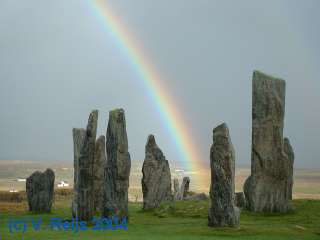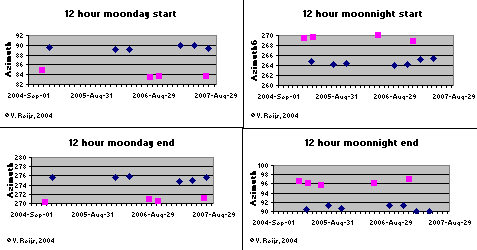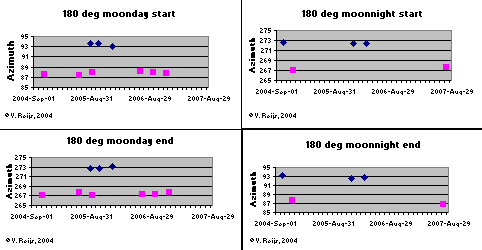 Home
HomeNEW
 Home
Home




| Knowth |
Calanais I |
|
| Year of
build |
~3100 BCE |
~2050 BCE |
| Latitude |
53o
43' |
58o
12' |
| Westerly
direction/apparent altitude |
258.6o/0o | 267.3o/0.5o |
| Easterly direction/apparent altitude | 85.0o/0.4o | 79.7o/0.5o |
| Southern major standstill limit
(rise/set) |
147.6o/213.6o | 161.7o/198.3o |
| Northern major standstill limit (rise/set) | 35.8o/325.4o | 25.3o/334.7o |
| 12 hour moonday (rise/set azimuth) | 84o/270o | 84o/270o |
| 12 hour moonday (rise/set azimuth) | 91o/277o | 91o/277o |
| 12 hour moonnight (set/rise azimuth) | 271o/97o | 271o/97o |
| 12 hour moonnight (set/rise azimuth) | 265o/91o | 265o/91o |
| Equal length moonday&night (rise/set azimuth) | 85o/270o | 85o/270o |
| Equal length moonday&night (rise/set azimuth) | 96o/270o | 96o/270o |
| 180º moonday&night (rise/set azimuth) | 87o/267o | 87o/267o |
| 180º moonday&night (rise/set azimuth) | 93o/273o | 93o/273o |